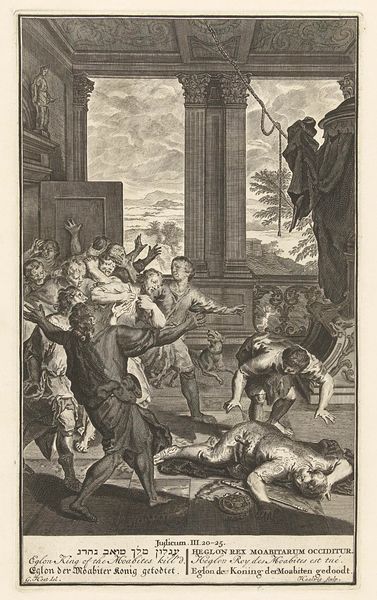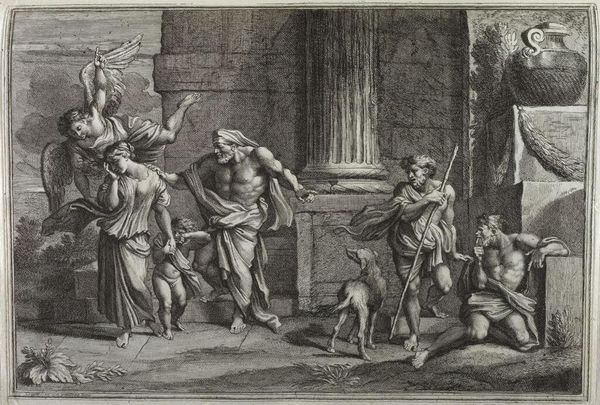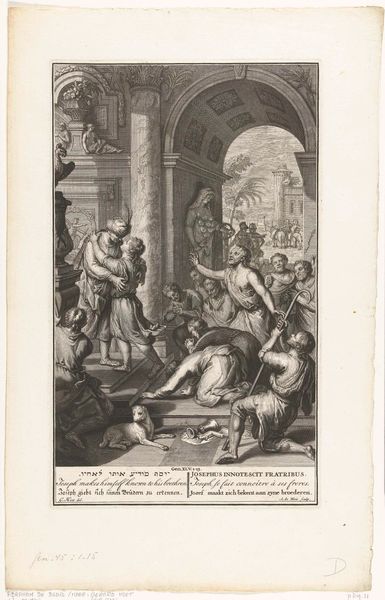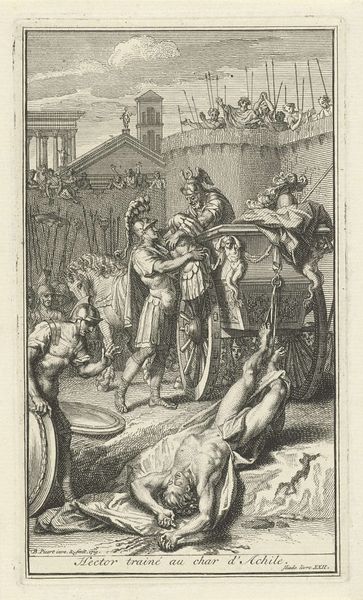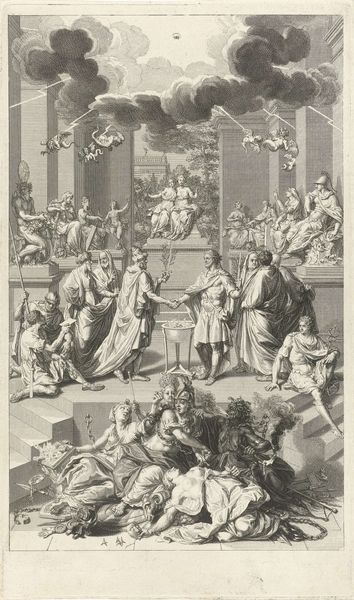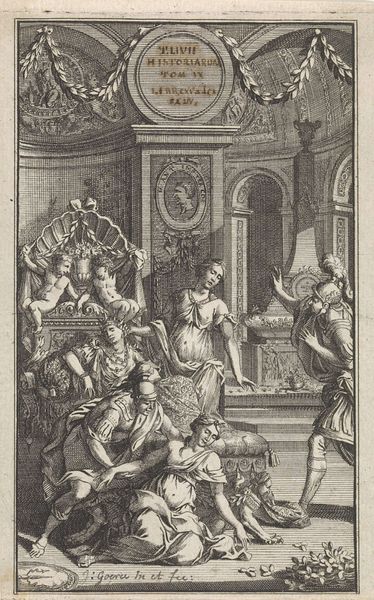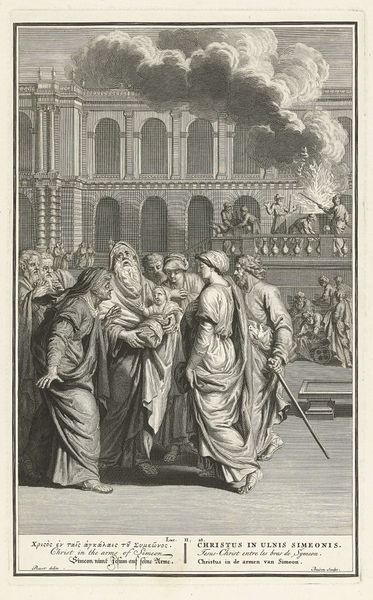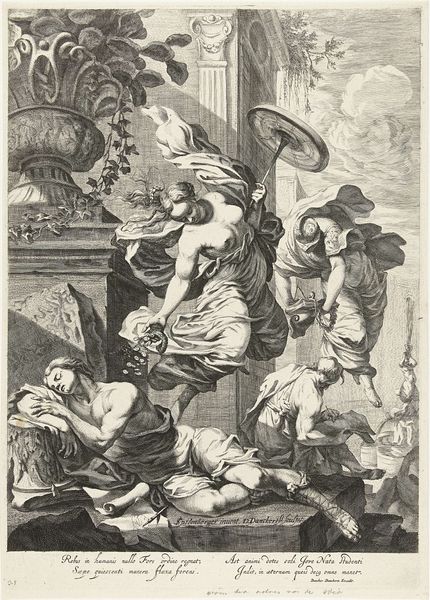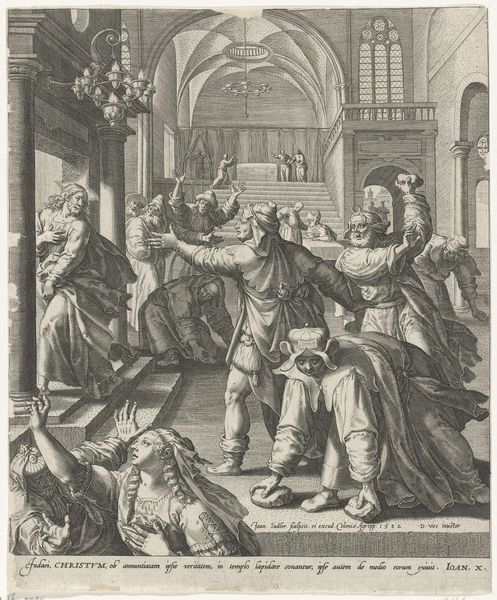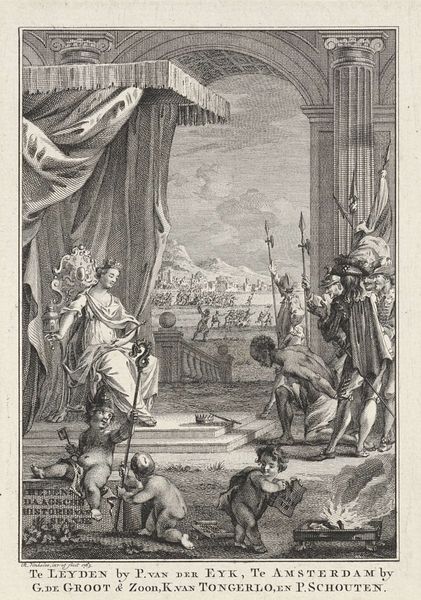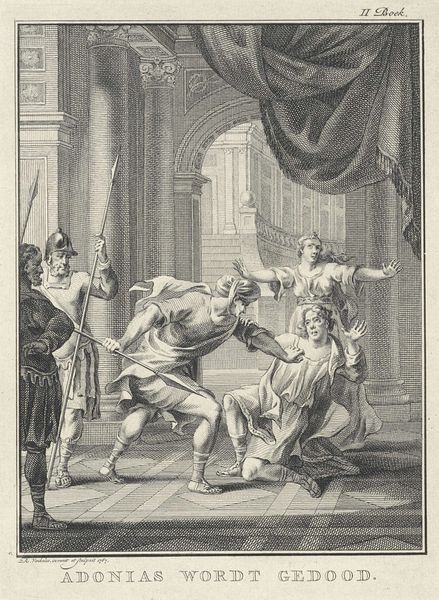
etching, engraving
#
baroque
#
etching
#
figuration
#
genre-painting
#
history-painting
#
engraving
Dimensions: height 647 mm, width 505 mm
Copyright: Rijks Museum: Open Domain
Pieter de Jode II created this engraving, "The Visitation," in Antwerp, likely around the mid-17th century. The image depicts the biblical scene of Mary's visit to her cousin Elizabeth, both pregnant, but Jode places it within a distinctly Flemish setting. Notice how Jode positions the figures on a raised balcony overlooking a courtyard. This isn't just about illustrating a bible story; it reflects the social hierarchy of the time. The elevated position of Mary and Elizabeth suggests their elevated status, contrasting with the servant and the burdened man below. The detailed architecture and the inclusion of animals also speak to the values of a society concerned with order, prosperity, and domesticity. To truly understand this work, we'd need to delve into the religious and social context of Antwerp during the Counter-Reformation, examining the role of the Church, the economic structures, and the daily life of its citizens. Historical sources such as guild records, church documents, and even household inventories could shed light on the complex web of meaning embedded in this image. The politics of imagery is apparent.
Comments
No comments
Be the first to comment and join the conversation on the ultimate creative platform.

